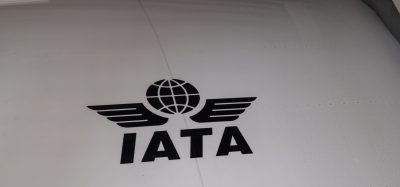Developments in jet fuel handling
- Like
- Digg
- Del
- Tumblr
- VKontakte
- Buffer
- Love This
- Odnoklassniki
- Meneame
- Blogger
- Amazon
- Yahoo Mail
- Gmail
- AOL
- Newsvine
- HackerNews
- Evernote
- MySpace
- Mail.ru
- Viadeo
- Line
- Comments
- Yummly
- SMS
- Viber
- Telegram
- Subscribe
- Skype
- Facebook Messenger
- Kakao
- LiveJournal
- Yammer
- Edgar
- Fintel
- Mix
- Instapaper
- Copy Link
Posted: 9 June 2010 | Martin Hunnybun, Technical Team Manager – Fuels & Fuel Handling, Energy Institute | No comments yet
National governments worldwide have mandated the use of renewable components in road transport fuels. One of the most common options is to blend Fatty Acid Methyl Ester (FAME) (derived from rape seed, palm, soy, tallow etc) into automotive diesel to produce a ‘biodiesel blend’. The European standard for automotive diesel (EN 590) currently allows up to 7% FAME, while in the USA, the ASTM specification for on- and off- road diesel (ASTM D975) allows up to 5% FAME. Other ASTM specifications cover 6 – 20% biodiesel blends.
National governments worldwide have mandated the use of renewable components in road transport fuels. One of the most common options is to blend Fatty Acid Methyl Ester (FAME) (derived from rape seed, palm, soy, tallow etc) into automotive diesel to produce a ‘biodiesel blend’. The European standard for automotive diesel (EN 590) currently allows up to 7% FAME, while in the USA, the ASTM specification for on- and off- road diesel (ASTM D975) allows up to 5% FAME. Other ASTM specifications cover 6 – 20% biodiesel blends.
Supply chains upstream of airports rely heavily on the use of common carrier systems to transport different fuels, particularly from refineries to intermediate storage facilities. Jet fuel may therefore be transported in pipelines and marine vessels which are also used to transport diesel. The fuel distribution industry has managed this effectively for many decades, but the inclusion of FAME in diesel has necessitated a significant change in operational practices to maintain jet fuel quality.
FAME is more surface active than diesel and adheres onto metal or glass surfaces. This can be an advantage in some applications where better lubricity is desirable but it can also create the potential for cross-contamination risk (at the level of parts per million) where supply chains handle both jet fuel and biodiesel blends. FAME is a non-hydrocarbon fuel component and current jet fuel specifications state explicitly that only hydrocarbon components or approved additives are allowed.
During the last two years the Energy Institute’s technical department has been working with industry stakeholders on various initiatives to assist the industry in its efforts to manage the risk of cross-contamination of jet fuel by biodiesel in the fuel distribution system.
In 2009, the Energy Institute (EI) held a technical seminar on Preventing jet fuel contamination by FAME – best practice in the distribution system. The seminar, chaired by Mike Farmery (Shell Aviation), and with more than 150 attendees, presented the reasons for the introduction of fatty acid methyl ester (FAME) in diesel fuel (Harald Schnieder of EUROPIA); industry experience gained from controlled trials of jet fuel/biodiesel fuel handling (Patrick Viltart, TRAPIL and Mieke Mortier, Chevron); jet fuel specification limits and aircraft OEM requirements (Jerry Tucker, UK MoD Defence Fuels Group and Ramya Venkataraman, Rolls-Royce); and an overview of the areas of risk to jet fuel quality (Anthony Kitson-Smith, ExxonMobil).
The seminar emphasised that the jet fuel specifications (including Defence Standard 91-91) limit the FAME content of jet fuel to less than 5 mg/kg and that just one litre crosscontamination by B5 (EN 590 diesel containing 5% v/v FAME) in 10,000 litres of jet fuel is sufficient to render the jet fuel offspecification. Speakers at the seminar also described the stringent fuel handling procedures that are currently in use throughout the jet fuel supply chain in order to meet this low limit. For background information and handling recommendations see Joint Inspection Group bulletins 15, 16, 20, 21 and 26 (available to download from www.jointinspectiongroup.org).
FAME in jet fuel approval programme
Major jet fuel suppliers had worked closely with airframe and engine OEMs (original equipment manufacturers) to see what could be done to mitigate these fuel handling challenges by establishing a limit for FAME that is more workable within the existing infra structure, without compromising jet fuel quality. Industry stakeholders agreed that the 5 mg/kg FAME limit in jet fuel could potentially be increased if an extensive testing programme showed that a higher level of FAME in jet fuel had no adverse impact on aircraft safety, reliability, maintenance requirements, performance or operability. It was evident that this approval process, which is followed by industry to confirm the acceptability of new jet fuel additives, would require significant industry resources, and the EI was asked to manage the testing programme.
An EI Joint Industry Project was established in May 2008, with the objective of gaining formal OEM acceptance to increase the FAME limit in jet fuel up to 100 mg/kg. A total of 21 companies/organisations provided funding towards the c. £1.2M approval programme (Box 1). The Project Steering Group also includes representatives from the major airframe and engine OEMs, who have collectively defined the required laboratory testing for the impact of FAME on aviation fuel properties and larger scale engine and airframe hardware testing.
Representatives of other organisations, including regulatory authorities, are also participating to ensure that all issues are adequately communicated. This collaboration between aviation industry stakeholders has been critical to the development of the project to date. Sourcing the required funding has been a challenge and additional financial support from other companies/organisations would still be most welcome (please contact [email protected]).
The process for approving new jet fuel additives is documented in ASTM D4054 Standard practice for qualification and approval of new aviation turbine fuels and fuel additives. It requires testing jet fuel containing the FAME ‘additive’, in this case a mixture of equal amounts of the four most common FAME types (rape, soy, palm oil and tallow methyl esters) at four times the target approval level, as summarised in Box 2. The completion of the required testing is placing significant resource demands on industry, but the testing con – tractors have confirmed to EI that the work can be completed by year-end 2010. The aircraft and engine OEM analysis of results and their decision on approvals of up to 100 mg/kg FAME should be available within three months after receipt of results.
Avoiding cross-contamination during marine shipment
The EI seminar also drew attention to the risk of cross-contamination during marine shipment. This issue has been worked by the EI’s Marine Transportation Committee, with input from many stakeholders, including the Joint Inspection Group Product Quality Committee.
EI publication HM 50 Guidelines for the cleaning of tanks and lines for marine tank vessels carrying petroleum and refined products provides recommendations on the marine shipment of aviation fuels and cleaning of vessels which have previously carried biodiesel or FAME cargoes. It is available to download free of charge from the EI publications website www.energyinstpubs.org.
Impact on jet fuel ground handling equipment at airports
Part of the aviation fuel handling industry response has been to assess potential effects on ground handling equipment/materials should the specification limit for FAME be increased to 100 mg/kg. In response to a request from the EI Aviation Equipment Sub-Committee the international suppliers of aviation fuelling hose have confirmed that their products are suitable for use with jet fuels containing up to 100 mg/kg FAME.
The EI Aviation Fuel Filtration Committee has also reviewed the potential impact of FAME on filtration equipment. It is considered that the surfactant additive package that is included in the laboratory test protocols mandated by industry for the qualification of filter/water separator designs (EI 1581 Specifications and qualification procedures for aviation jet fuel filter/separators, 5th edition) results in filters that are not readily affected by trace levels of FAME in jet fuel. In support of this, bench scale testing by one EI member company has confirmed that exposure to 2000 mg/kg FAME during a 40 hour test did not degrade coalescence performance. Similarly, limited bench scale testing by another EI member company has confirmed that trace levels of FAME do not adversely affect filter monitor media water uptake – the key function provided by this type of filter that is typically used during refuelling.
Analytical test method development/FAME detection
At a similar time to initiating the Joint Industry Project the EI was asked to expedite the development of analytical test methods for the detection of trace levels of FAME in jet fuel. The objective was to establish a primary reference method, against which future field methods could then be compared. Various analytical techniques were considered at an EI technical workshop, and the four most viable were subjected to laboratory testing to determine their ‘ruggedness’. The publication followed in December 2008 of ‘Proposed Method’ (PM)-DY/09 Determination of fatty acid methyl esters (FAME), derived from bio-diesel fuel, in aviation turbine fuel — GC-MS with selective ion monitoring/scan detection method. This technique, utilising gas chromatography and mass spectrometry, was developed further and subjected to an inter-laboratory study to develop a precision statement (repeatability and reproducibility of results). The full analytical method IP 585 was published in April 2010 (available from www.energypublishing.org).
Two other analytical methods have also been developed, and subjected to inter-laboratory studies to determine precision statements. Publication of these methods is expected before mid-year 2010. The development and management of the inter-laboratory studies was a major undertaking in 2009, drawing upon funds provided to the EI Technical Programme from its Technical Partners. With around 1500 fuel samples these studies represented one of the largest programmes ever undertaken by the EI. With the uncertainty around future permissible levels of FAME in jet fuel, and increasing levels of experience in laboratory analysis, it is likely that test method development will continue in this area for some time to come.
Conclusions on FAME
The industry is currently managing significant fuel handling challenges brought about by the introduction of FAME in automotive diesel, to ensure the continued integrity of jet fuel quality and equipment compatibility and operability throughout the supply chain. What started as an issue of European concern has quickly taken on international urgency as biodiesel mandates have been adopted in other countries, and the efficiency of utilising existing fuel handling infrastructure is recognised. The Energy Institute has demonstrated its ability to respond rapidly in support of changing industry requirements, drawing upon resources from several of its technical committees, and soliciting additional contributions from a large number of stakeholders. The challenge of managing jet fuel quality in a World of increasing biofuel use will remain in future and can only be addressed through continued collaborative industry initiatives.
International fuel handling equipment standards and recommended practices
For over 50 years the EI has provided equipment standards and operational recommended practices for use by the inter – national aviation fuel handling industry. Over the last decade, 15 of these titles have been produced and published jointly with the American Petroleum Institute. After an organisational review, API has confirmed that from 30 June 2010, the Energy Institute (EI) will take over as the sole provider of the portfolio of publications to facilitate the safe and efficient handling of aviation fuel at airports. The jointly branded titles will be superseded by technically identical EI reprints (document reference numbers and edition numbers will remain the same), made available through the EI only.
The equipment standards in particular are followed worldwide by manufacturers, and adopted by international airlines, major and national oil companies, into-plane com – panies and aviation fuel hydrant operators. The use of equipment that meet the standards is mandated in operational documents such as those provided by the Air Transport Association of America (ATA) and the Joint Inspection Group (JIG), and referenced in the International Air Transport Association (IATA) Guidance materials for aviation turbine fuels specifications.
The EI is committed to continue to provide the global forum for the standardisation of aviation fuel handling equipment, and operational recommended practices, ensuring that they reflect the consensus agreement of international technical specialists and stakeholders.
New edition of EI 1583 – laboratory tests for water absorbing filters
In January 2010 the sixth edition of EI 1583 Laboratory tests and minimum performance levels for aviation fuel filter monitors was issued. These filters are typically used on fuelling vehicles and are designed to remove trace water from fuel and also to shutoff the flow of fuel if a larger quantity of water occurs. The sixth edition 1583 is the culmination of over two years of EI-funded research and work with the filter manufacturers worldwide, into laboratory testing protocols for this type of filter technology. This has resulted in the inclusion of three new qualification tests.
Addendum to EI 1550 – Handbook on fuel cleanliness equipment
An EI handbook providing information on the types of equipment used to maintain fuel cleanliness from refineries through to delivery to aircraft, EI 1550, was published in 2007. The good practice recommendations have been very well received by the filtration user community. An addendum to EI 1550 has recently been published, explaining the developments in the laboratory testing of filter monitors. The new 1550 chapter 9 is available as a free of charge pdf download from the EI website, www.energyinst.org.uk/filtration
New handbook on electronic sensors for dirt/water detection in jet fuel, EI 1570
In recent years there has been much interest within the aviation fuelling industry into the potential use of electronic sensors for the detection of trace levels of particulate matter and free water in jet fuel. The EI is preparing a handbook to provide potential users of such sensors with an understanding of the fundamental principles of each type of technology that may be suitable for aviation fuelling applications. Key considerations for users will also be provided, along with an outline of the influence of fuel sampling regimes that may be adopted by different devices, and the implications for data analysis. Discussion will also be provided on the influence/ importance of a sensor’s response time to a particulate matter/free water event in aviation fuel, and its subsequent recovery time. It is the intention to make the handbook available to industry before year end 2010.
The Energy Institute (EI) was formed in 2003 by the merger of the Institute of Petroleum and the Institute of Energy. It is the leading chartered professional membership body for the international energy industry, responsible for the development and dissemination of knowledge, skills and good practice, working towards a safe, secure and sustainable energy system. Supporting all those studying and working in energy, and with over 14,000 individuals and 300 companies in membership, it offers learning and networking opportunities to support career development. Delivering professionalism and good practice, the EI addresses the depth and breadth of energy in all its forms and applications, providing a scientific and technical bank of knowledge for industry. For more information, please visit www.energyinst.org
About the Author
Martin Hunnybun
Martin Hunnybun is Technical Team Manager – Fuels & Fuel Handling at the Energy Institute. He is responsible for the EI’s analytical test methods for petroleum and related products, its portfolio of publications on hydrocarbon management and for fuel handling issues within the distribution and marketing sector. He has been co-ordinating the work of the EI’s Aviation Committee, which comprises senior technical representatives from each of the major oil companies, since 1996, and combined their activities with those of the American Petroleum Institute in 2000.

















